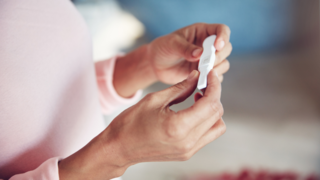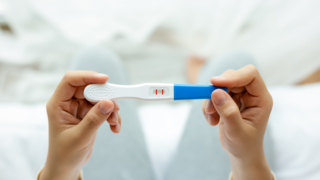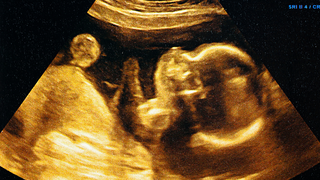In this article:
Understanding the Post-Surgery Phase
After endometriosis surgery—laparoscopic or open—the body needs time to adjust and heal. Removal of lesions reduces pain and fatigue, but tissues and organs need time to regain normal function.The first few weeks are crucial.
- Rest is essential. Give the body time to recover without rushing back into routine.
- Light movement helps prevent stiffness and improves circulation. Gentle walking can support faster healing.
- Pain or mild discomfort may continue. Staying in touch with your doctor ensures timely management of any complications.
Physical Recovery and Care
Each person’s recovery timeline varies, but some post-surgery care practices support better healing and comfort.1. Follow-up Appointments
- Attend all follow-up visits as advised by the doctor.
- Discuss any unusual pain, bloating, or bleeding immediately.
- Ask about a gradual return to physical activity and work.
A balanced diet speeds tissue repair and reduces inflammation.
- Include iron-rich foods like spinach, lentils, and jaggery to rebuild strength.
- Focus on fibre—whole grains, fruits, and vegetables—to ease digestion.
- Stay hydrated. Warm water or herbal teas can support internal cleansing.
Once cleared by your healthcare provider, slow exercise improves circulation and prevents stiffness.
- Begin with stretching and walking.
- Gradually add yoga or breathing exercises to relax abdominal muscles.
- Avoid heavy lifting until fully recovered.
- Aim for at least 7–8 hours of quality sleep.
- Elevate legs when resting to improve blood flow.
- Use relaxation techniques like deep breathing or meditation before sleep.
Emotional Recovery and Mental Well-being
Endometriosis is not only a physical condition—it impacts emotional health deeply. Many individuals report feeling anxious about recurrence or fertility after surgery.Ways to support mental well-being:
- Acknowledge feelings. Emotional ups and downs are normal during recovery.
- Seek support. Talking to friends, family, or counsellors helps process emotions.
- Join support communities. Online or local endometriosis groups can provide understanding and shared experiences.
- Practise mindfulness. Gentle meditation, journaling, or gratitude routines bring emotional balance.
Fertility After Endometriosis Surgery
Fertility concerns are a primary reason individuals choose surgery. Endometriosis can affect the ovaries, fallopian tubes, and uterus, making conception difficult. Surgery can improve fertility outcomes by clearing lesions and restoring normal anatomy.Post-surgery fertility insights:
- Fertility often improves within 6 to 12 months after surgery.
- Chances of conception depend on the severity of endometriosis before surgery and overall reproductive health.
- Doctors may suggest fertility-enhancing treatments if natural conception takes time.
- Maintain a healthy body weight.
- Eat foods rich in antioxidants—fresh fruits, seeds, and leafy greens.
- Avoid smoking, alcohol, and processed food.
- Manage stress through yoga or meditation, as stress can affect hormone balance.
Long-Term Care and Lifestyle Adjustments
Endometriosis may not have a permanent cure, but lifestyle management after surgery offers lasting relief and well-being.1. Regular Check-ups
- Schedule gynaecological exams every 6–12 months.
- Track menstrual cycles and note any unusual changes in pain or flow.
- Prefer fresh, home-cooked meals over processed foods.
- Include anti-inflammatory foods like turmeric, ginger, and flaxseed.
- Reduce caffeine and sugar intake.
- Regular activity helps regulate hormones and reduces the risk of recurrence.
- Choose activities like swimming, yoga, or brisk walking for holistic benefits.
Stress can trigger a hormonal imbalance and worsen symptoms.
- Practise meditation or deep breathing daily.
- Spend time outdoors or in nature to calm the mind.
Digestive issues often accompany endometriosis.
- Eat probiotic-rich foods, such as yoghurt or fermented vegetables.
- Drink enough water and include fibre daily.
Keeping a simple health journal helps recognise early warning signs of recurrence. Record pain patterns, diet, and emotional states for better doctor consultations.
Life after endometriosis surgery does not follow a straight path. Instead, recovery is a gradual and rewarding journey back to balance. Taking care of your body with rest, good nutrition, and gentle activity is important, as is looking after your emotional health. Over time, fertility may improve, and making lasting lifestyle changes can help reduce the risk of symptoms returning.
With awareness, patience, and self-care, leading a full, healthy life after endometriosis surgery is possible. Healing takes time, but each step brings strength and confidence.
You’re not alone in your journey when trying to conceive. Join our supportive community to connect with others, share experiences, and find encouragement every step of the way.
FAQs on Healing After Endometriosis Surgery: A Complete Guide to Recovery and Fertility for Indian Women
- How long does full recovery take after endometriosis surgery?
Recovery time varies depending on the type of surgery. Most individuals resume normal activities within 4–6 weeks, though complete internal healing can take up to three months. It’s best to follow medical advice before resuming heavy tasks or exercise. - Can endometriosis return after surgery?
Yes, endometriosis can recur in some cases, especially if hormonal balance is not maintained. Regular follow-ups, a healthy diet, and stress management significantly reduce the risk of recurrence. - Is pregnancy possible naturally after endometriosis surgery?
Yes, many individuals conceive naturally after surgery. Fertility often improves once the endometrial tissue is removed. However, factors like age, prior fertility health, and endometriosis severity play a role, so medical guidance is important.










